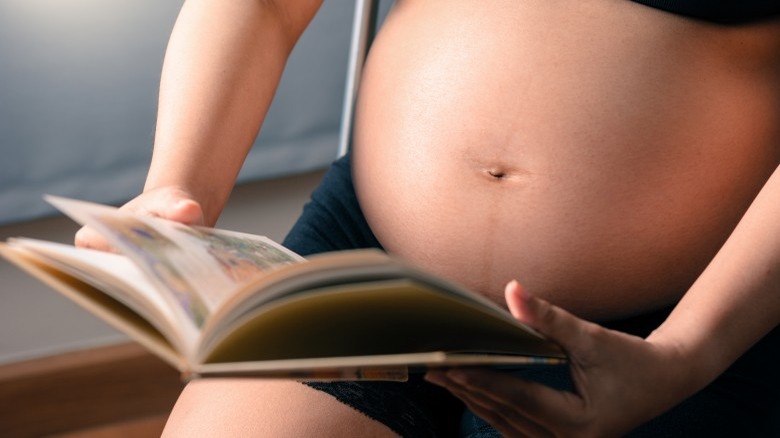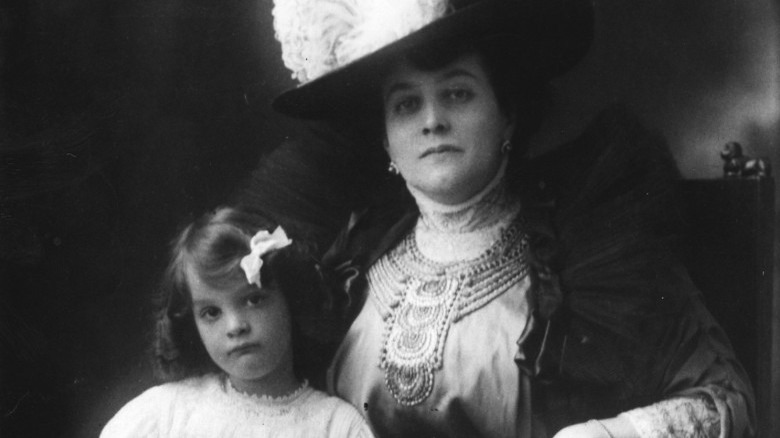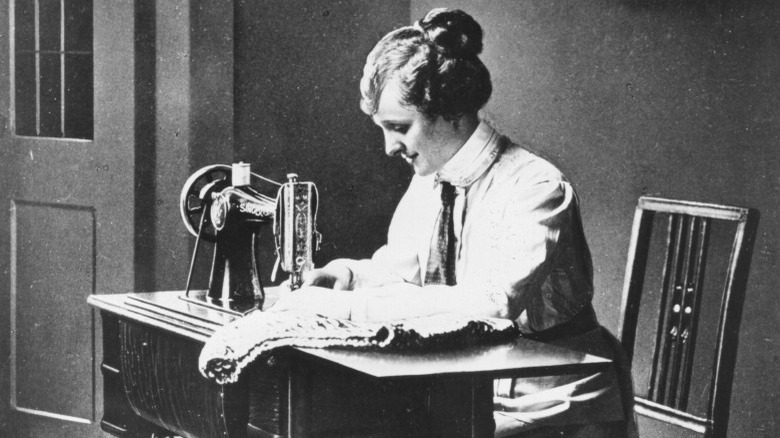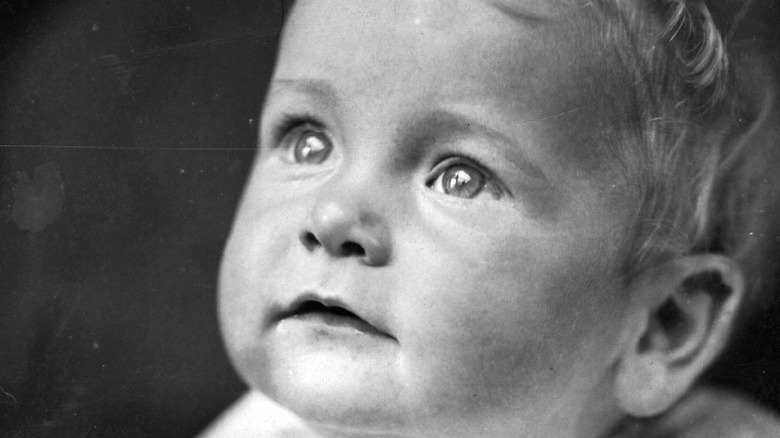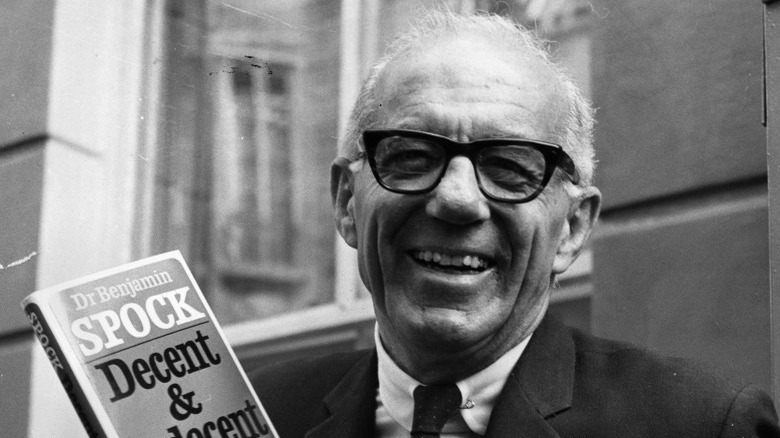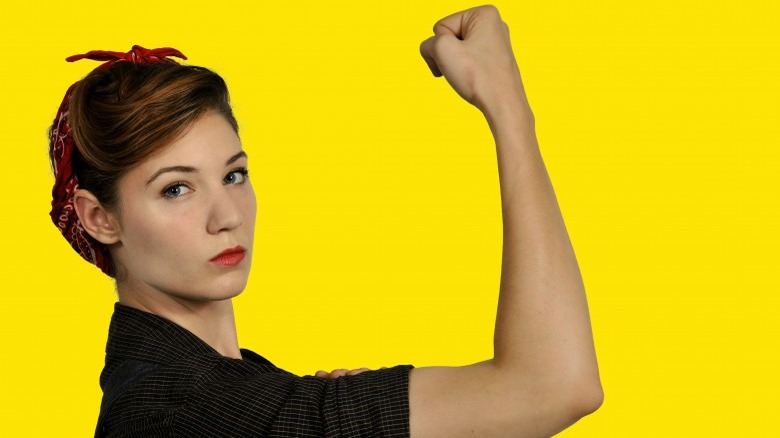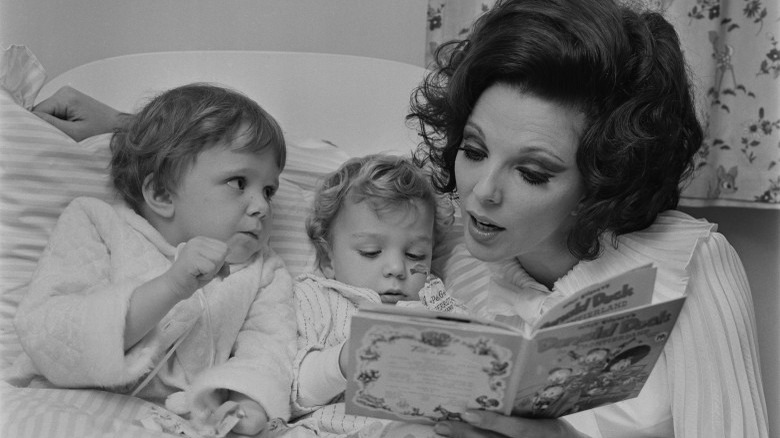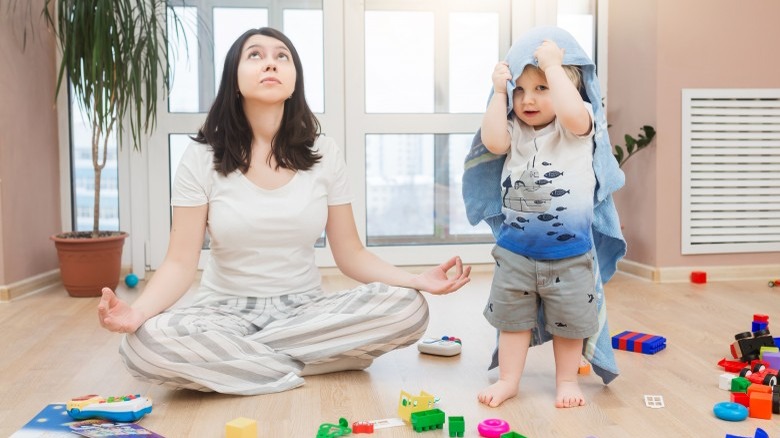How The Role Of Being A Mom Has Changed Throughout History
We may receive a commission on purchases made from links.
The role of a mom is undoubtedly an important one. As a first-time mom-to-be, I have developed a new habit that is taking over my coffee table and racking up my Amazon account long before childbirth even happens. I have become a motherhood book hoarder. Up until now, most of my books have been on the joys (and pains) of pregnancy. But as the big day gets closer, I've started to pay more attention to what I need to do after baby arrives to be the best mother I can be.
Of course, "best mother" is a subjective measure. And its definition has changed greatly over the years (as has our understanding of most things). Book searching, in fact, is a great way to see that change. It doesn't tell the whole story but, speaking from experience, a scared, confused, and inexperienced mom is always looking for an expert on how to be a better one. If the best-sellers had anything to with it, then this is how the role of mom has changed throughout history.
Crying it out
Starting all the way back in 1916, moms were driving their horse and buggies in droves to pick up The Mother and Her Child by Drs. Lena and William Sadler. This gem instructed moms to "handle the baby as little as possible" and explained that "crying is absolutely essential to the development of good, strong lungs." Basically, it encouraged little contact with your baby, and discouraged allowing the baby to interfere with your life.
According to The Atlantic, this type of parenting advice was unanimous amongst all motherhood manuals during that era. But the reason this approach was embraced, it seems, was a sign of the times. Dr. Rima Apple, professor emerita of human ecology at the University of Wisconsin-Madison, explained to The Atlantic that infant mortality was a regular occurrence during that time. This instilled fear in mothers everywhere. They had no idea how to respond to their baby's cries and they were in desperate need of an expert to guide them.
Seeking an expert
The hot new male pediatricians and obstetricians were happy to dole out advice to establish themselves as authorities on the matter. What's more, emigration split up generations of mothers and aunties, making it more difficult for women to look to their elders for advice.
The funny thing is, though we tend to paint a picture in our head of a simpler time when mothers were at home baking cakes and attending to their children, the reality was a mother at home, assembling cigarettes or sewing clothing for a wage — with baby in one hand and a broom in the other. In other words, they had to work. Stephanie Coontz, historian and author of Marriage: A History explained to The Christian Science Monitor, "Mothers in 1908 spent less time mothering than they do today. Even in the middle classes, they spent much less time with their kids than we would have imagined."
So it sounds like a harsh reality of tough love and a tough living was the role of a mother of the 1900s. Makes you think about how much stock we put in BPA-free bottles and color video baby monitors, doesn't it?
The authoritarian mom
By the 1920s, the parenting advice industry was really revving up. The style du jour? Authoritarian parenting. In other words, "Do as you're told or else." The hot book? Psychological Care of Infant and Child, by American psychologist John B. Watson. He advised strongly against mothers giving their children too much love. Watson says, "Never hug and kiss [children], never let them sit in your lap. If you must, kiss them once on the forehead when they say good night. Shake hands with them in the morning ... Try it out."
He actually proposed that we halt reproduction for 20 years to give us time to gather data and establish the most effective child-rearing process. A real softy, right? Not to be outdone, though, by Sir Frederick Truby King, the Kiwi health reformer and poster child for enforcement parenting. He gave the sound advice to toughen children up by leaving them out in the garden, and only allowing for ten minutes of cuddling time a day, max.
Women, again, were not just mothers, they were working mothers. And not in the same way that the women of the 1900s were. They were seeking employment outside of the home. Some were living independently for the first time in their lives, and having fewer children.
All hail Dr. Spock
It might shock you to know that one of the best-selling books of all time — second only to the Bible during its 52-year history — is a parenting guide that changed the role of mom. Baby and Child Care by Dr. Benjamin Spock revolutionized motherhood. He was, according to his Time obituary in 1998, "One of the most famous and controversial figures of his century. He singlehandedly changed the way parents raise their children."
For the first time, the expert was telling mom that love and affection was a good thing. His biggest takeaway: "Trust yourself. You know more than you think you do."
The war mom
Thank God for this shift in mentality because in this World War II era, mothers needed all the support they could get. Unfortunately, that same support towards mother-loving was also a slight against mothers who worked. And there were a lot of them — more than ever before. Posters, ads, and newspapers everywhere applauded America's working woman. It was a woman's role to fill the shoes of her man who was off fighting for his country. And the woman's job — working in defense plants and even joining the armed forces themselves — was just as patriotic as their male counterparts' job.
This created a deep need for childcare facilities. When they were home with their children, instead of facilitating play dates and making brownies for the bake sale, moms were teaching their children how to buy war bonds. While some saw the day care as a site of patriotism, others feared the impact it would have on children.
"Social workers and child care advocates had the conviction that encouraging mothers to be workers would harm family life [which] led them to resist expanding day care in the early years of war, and then to insist on limiting and controlling it," wrote Elizabeth Rose in A Mother's Job.
June Cleaver generation
If the 1940s was a time for female (and mother) empowerment, then the 1950s was the era for putting them right back in their place. Those same newspapers now started displaying ads with soldiers daydreaming about the way things were. One ad reads, "....inside in the living room you'll find your easy chair, your footstool and your slippers, just as they always were each night before you went away to war."
Operation June Cleaver was set into motion. The magazines that once elevated women for being strong, intelligent, and courageous, were now implying that the working woman — and the college educated one — was becoming too masculinized, leading to dangerous consequences for their country, their husbands, and their children. As stay-at-home mothers once again increased, so did the hours of housework. According to the New York Times, full-time stay-at-home moms spent 55 hours a week on dusting, vacuuming, and cooking — much longer than today's mom. And if you had young children, you were in for an even longer workweek. Help from the husband, however, was a rare occurrence.
This time, it wasn't so much a book that lead the charge in mothering advice, but the TV mom. Jane Wyatt showed us how a housewife should act on Father Knows Best. Donna Reed (The Donna Reed Show) was not only a loving wife and mother, she was also involved in her community. And of course, there was the iconic June Cleaver from Leave it to Beaver who somehow had the ability to teach her two young boys life's hardest lessons, all while doing housework in high heels and pearls.
Children's liberation
The 1960s saw the first attempt at child liberation. How to Raise a Brighter Child taught parents how to help kids reach their fullest potential. The authors believed that to truly empower your child, you would have to put forth extra effort — rich stimuli, playgroups, educational toys. This became "child-centered" mothering. The role of a good mom was to serve her children without pressuring them.
It came as no surprise, then, that these high, almost unreachable expectations, led many mothers to feelings of inadequacy and depression. A Gallup survey from 1962 reported in The New York Times states, "The female doesn't really expect a lot from life...She's here as someone's keeper — her husband's or her children's."
Stay-at-home moms, in particular, displayed higher levels of stress and higher levels of depression than their working mom counterparts. And if spousal abuse was an issue, they had little legal protection against them.
Mom's liberation
By the 1970s, moms were feeling much more liberated thanks to a host of new laws and amendments — the 1963 Equal Pay Act, the 1964 Civil Rights Act, the 1979 Pregnancy Discrimination Act, and more. For the first time, women were free to continue working when they became pregnant, and at a higher pay no less — what a concept! The best-seller at the time, The Mother's Almanac by Marguerite Kelly and Elia Parsons, gave mom permission to forget the idea that "you have to be an expert to raise a child." Written for moms, by moms, it was a down-to-earth, real-life tome that not only included advice, but recipes, crafts, and fun activities.
The 1980s brought hard hair, tough aerobics, and the mother of all mothering books, Heidi Murkoff's What to Expect When You're Expecting. The perfectionist was born. And information overload was exactly what mom was looking for.
Mothers were doing everything — and doing it well. And finally getting a little bit more help from their husbands. In 1980, about 30 percent of wives claimed their husbands did not do any housework. But by 2000, only 16 percent agreed with that statement and almost one third said their husbands shared in the housework, child care, or both.
The rules are: there are no rules
Today, I think we would all agree that there is no one "baby whisperer" or voice of the mommy gods telling us the best way to parent, and the role of moms has taken on new meaning. Moms now feel empowered to raise their kids exactly as they want to raise them. As Jessica Grogan Ph.D. wrote for Psychology Today, "The contemporary state of parenting advice is less bifurcated; it's more of a choose your own adventure."
It seems as if we're still reading the parenting books, but the books themselves are about throwing the books out the window.
I dare you to do a quick book search on Amazon right now using the word "Motherhood." You will find such titles as I Just Want to Pee Alone, Sh*tty Mom: A Parenting Guide for the Rest of Us, and I Heart My Little A-Holes, (a New York Times bestseller!). And who says you have to raise your children the American way? Why not be like the French with Bringing up Bébé or strive to be like the Asian parent and raise children at the Top of the Class?
#coolmom
Of course, finding your perfect role as a mom doesn't have to come from books. There are also the mommy blogs to lend a helping hand. There's the Tech Savvy Mama, the Design Mom, the ever fashionable Cupcakes and Cashmere, and the hilarious Scary Mommy.
There isn't one expert because everybody is making themselves the expert. After all, moms aren't young and helpless anymore. At an average age of 26, first-time moms are older than ever. And they don't bite off more they can chew. They are having an average of two kids compared to the three or four children their mothers and grandmothers were having.
Sure, there is still fear and uncertainty going into motherhood. No mom can fully prepare themselves for what some would consider the World's Toughest Job. But at least we can move forward without judgment, without injustice, and with a little help from Amazon.
